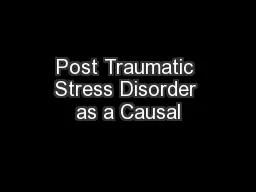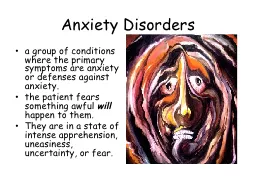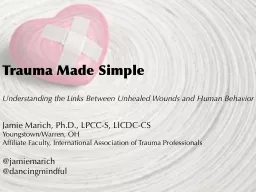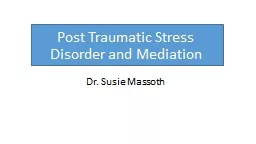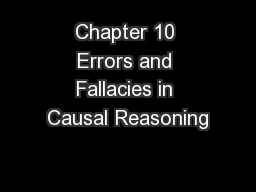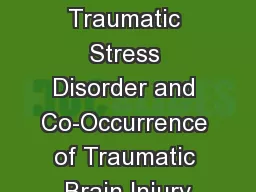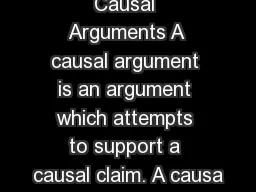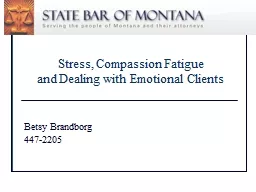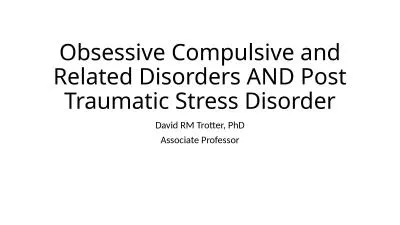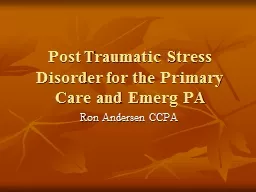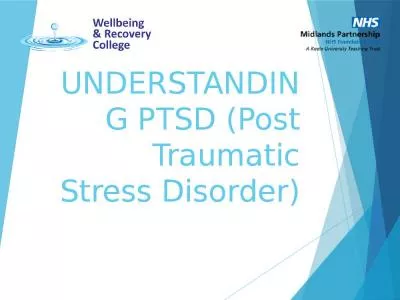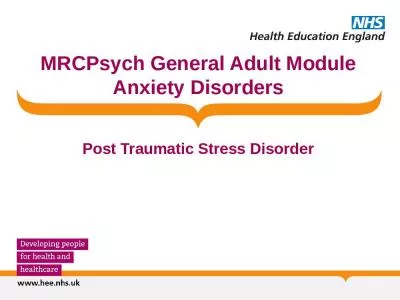PPT-Post Traumatic Stress Disorder as a Causal
Author : yoshiko-marsland | Published Date : 2017-11-03
System Nader Amir and Shaan McGhie San Diego State University San Diego CA US Disclosure Dr Amir was formerly a part owner of Cognitive Retraining
Presentation Embed Code
Download Presentation
Download Presentation The PPT/PDF document "Post Traumatic Stress Disorder as a Caus..." is the property of its rightful owner. Permission is granted to download and print the materials on this website for personal, non-commercial use only, and to display it on your personal computer provided you do not modify the materials and that you retain all copyright notices contained in the materials. By downloading content from our website, you accept the terms of this agreement.
Post Traumatic Stress Disorder as a Causal: Transcript
Download Rules Of Document
"Post Traumatic Stress Disorder as a Causal"The content belongs to its owner. You may download and print it for personal use, without modification, and keep all copyright notices. By downloading, you agree to these terms.
Related Documents

